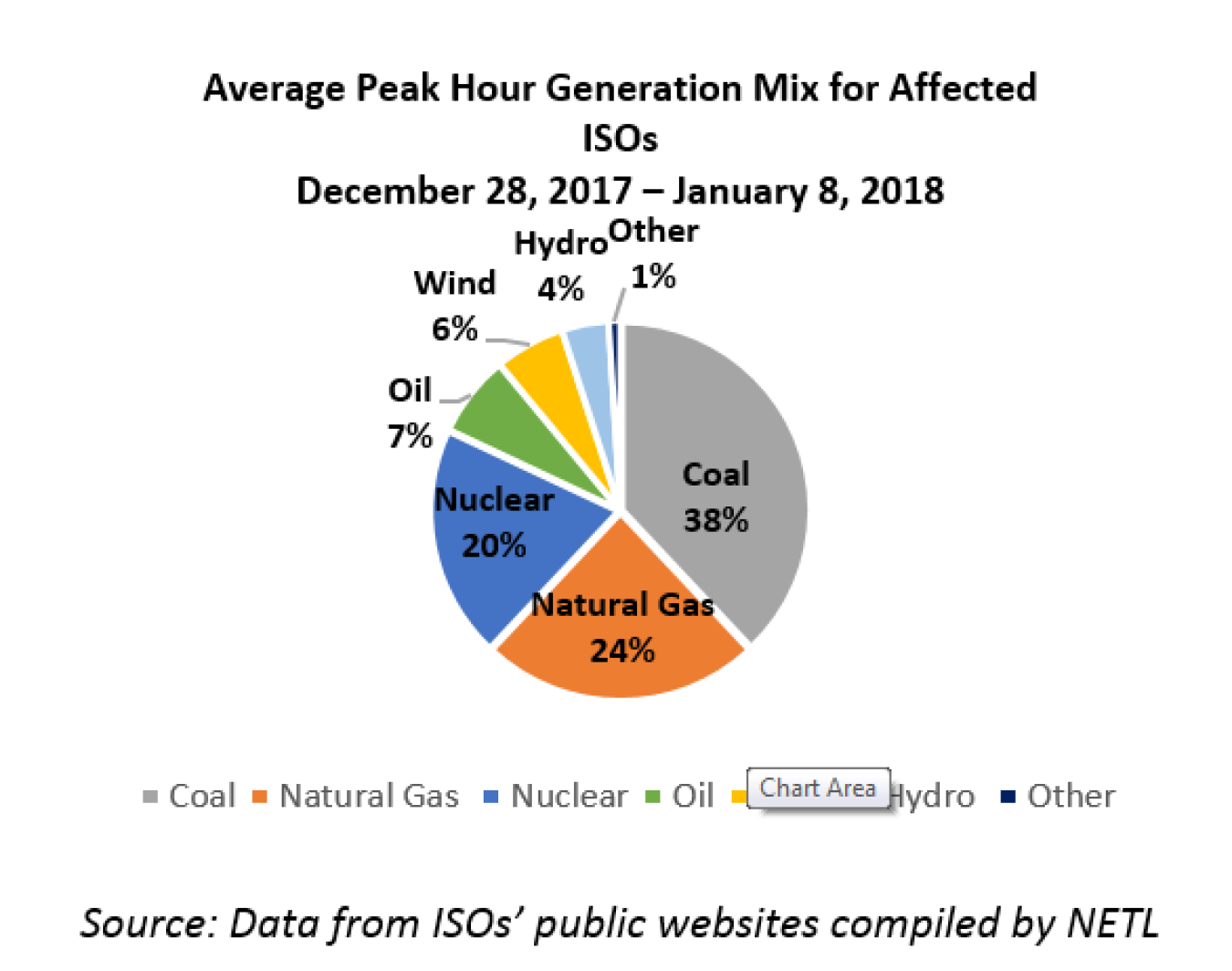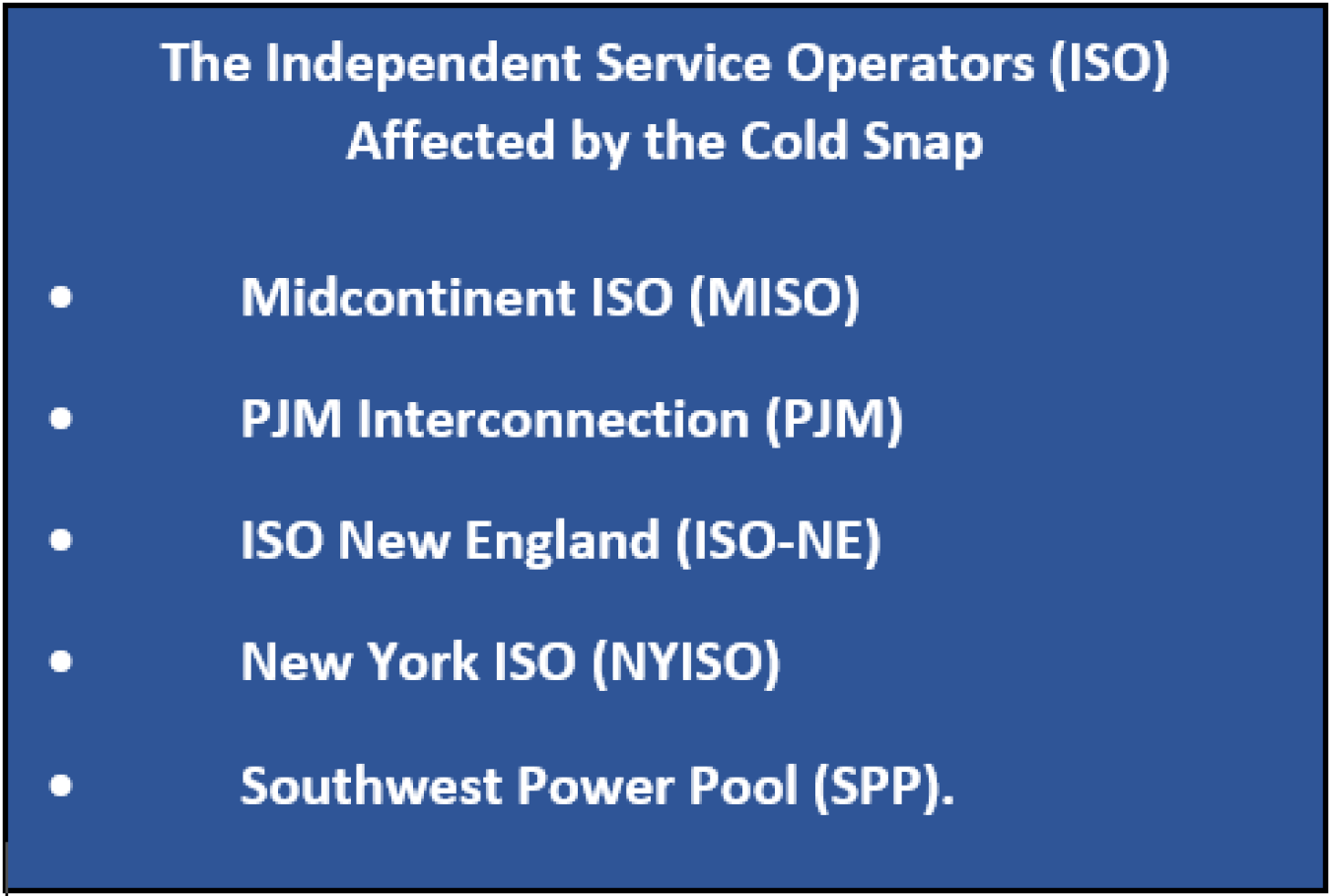During the recent cold snap that hit the United States, fossil fuels played an important role in meeting increased electricity demand.
Office of Fossil Energy and Carbon Management
January 12, 20182018 got off to a frosty start in the United States, with temperatures plunging into the single digits—and well below zero—in some areas.
In New York’s Times Square, revelers watched the ball drop with a wind chill of -4˚F—the second-coldest New Year’s Eve celebration on record. In the Midwest, cities like Indianapolis broke records with negative temperatures, and in New England, the summit of Mt. Washington experienced wind chills of -89˚F. Even the Deep South couldn’t escape the bitter cold, with Atlanta’s temperatures reaching an icy 13˚F during the cold weather’s peak.
Across the nation, these record-breaking cold temperatures created a need for more heating fuels and electricity—putting a strain on several independent system operators (ISOs) to meet demand. (An ISO controls and maintains the electrical power system, or grid, in a particular region.)
The big news was not that the lights stayed on, but where the electricity came from. Throughout the cold snap, beginning at the end of December, five ISOs relied heavily on available fossil fuels and nuclear power to make sure they could reliably produce enough electricity for their customers.
Using fuels that included coal, natural gas, nuclear energy, and oil the ISOs were able to generate enough electricity to keep their customers’ homes and businesses powered with minimal disruptions.
During the cold spell, fossil fuels stepped up to provide an even greater share of generation than they normally do. In fact, they supplied an average of nearly 40 percent of the power generation mix during peak energy times across the affected regions. Coal and nuclear power provided a combined 58 percent—almost 3/5—of all power generated.
Another fact: coal- and oil-fired plants contributed nearly 15 percent more power at peak times of electricity usage than on a typical winter day. In particular, for ISO New England—where pipeline constraints limit the amount of natural gas that can be imported into the region during periods of peak demand—oil-fired generation filled the gap.

Throughout the cold snap, on average, the ISOs depended on coal, nuclear, and natural gas for almost 82 percent of the electricity produced for the times of highest electricity usage each day.
After the Polar Vortex of 2014, many ISOs developed strategies for making their energy supplies more stable during times of increased demand. These strategies involved incorporating different sources of energy, as well as creating stockpiles of resources, like coal and oil, for back-up generation.
So during this recent cold spell, the electric grid held up because these ISOs had fuel available and were ready to produce extra power. But, the looming retirements of coal and nuclear power plants could pose a challenge their ability to meet increased demand during similar future weather events.


